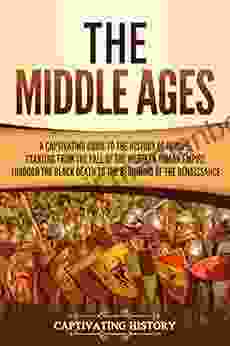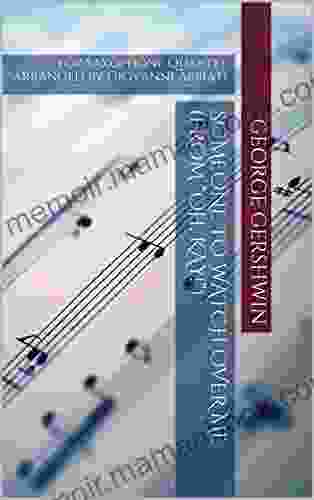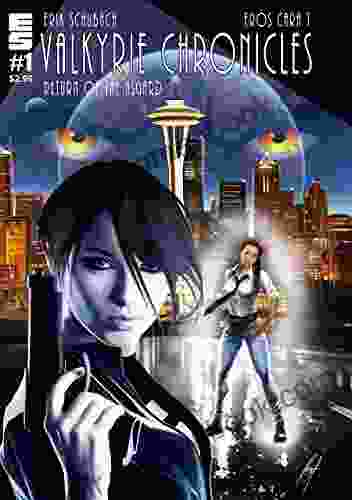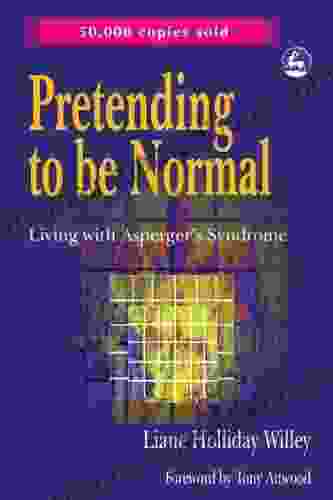A Captivating Guide to the History of Europe Starting From the Fall of the Roman Empire

Europe has a rich and complex history that spans over millennia. From the rise and fall of empires to the development of new ideologies and technologies, Europe has been at the forefront of human civilization.
4 out of 5
| Language | : | English |
| File size | : | 4757 KB |
| Text-to-Speech | : | Enabled |
| Screen Reader | : | Supported |
| Enhanced typesetting | : | Enabled |
| Word Wise | : | Enabled |
| Print length | : | 92 pages |
| Lending | : | Enabled |
This article provides a comprehensive overview of the history of Europe, starting from the fall of the Roman Empire to the present day. It covers major events, key figures, and the development of European общества and culture.
The Fall of the Roman Empire
The fall of the Roman Empire in the 5th century AD marked the end of an era and the beginning of a new chapter in European history. The empire had been in decline for centuries, plagued by political instability, economic problems, and barbarian invasions.
The final blow came in 476 AD when the last Roman emperor, Romulus Augustulus, was deposed by the Germanic chieftain Odoacer. This event symbolized the end of the Roman Empire and the beginning of the Middle Ages.
The Middle Ages
The Middle Ages was a period of great change and upheaval in Europe. It was a time of political fragmentation, religious conflict, and economic decline. However, it was also a time of great intellectual and artistic achievement.
The Middle Ages saw the rise of feudalism, a system of social and political organization based on land ownership. Feudalism led to the development of a new social hierarchy, with the king at the top and the peasants at the bottom.
The Middle Ages was also a time of great religious fervor. The Catholic Church played a central role in European society, and its teachings shaped people's lives in all aspects.
The Renaissance
The Renaissance was a period of great cultural and intellectual change in Europe. It began in Italy in the 14th century and spread to the rest of Europe in the 15th and 16th centuries.
The Renaissance was a time of renewed interest in classical learning and culture. Scholars rediscovered the works of ancient Greek and Roman authors, and this led to a new emphasis on humanism and reason.
The Renaissance also saw the development of new art forms, such as painting, sculpture, and architecture. Artists such as Leonardo da Vinci, Michelangelo, and Raphael created some of the most famous works of art in history.
The Reformation
The Reformation was a religious movement that began in the 16th century. It led to the establishment of Protestantism, a new branch of Christianity that challenged the authority of the Catholic Church.
The Reformation was led by Martin Luther, a German monk who criticized the Catholic Church's practices and teachings. Luther's ideas quickly spread throughout Europe, and soon there were Protestant communities in many countries.
The Reformation had a profound impact on European history. It led to religious wars and political upheaval. It also contributed to the development of new ideas about science and education.
The Enlightenment
The Enlightenment was a philosophical movement that began in the 17th century. It emphasized reason and logic as the best ways to understand the world.
Enlightenment thinkers such as Voltaire, Rousseau, and Locke argued that people should be free to think and express themselves without fear of persecution. They also believed that government should be based on the consent of the governed.
The Enlightenment had a profound impact on European history. It led to the development of new political and economic ideas, and it helped to pave the way for the American and French Revolutions.
The Industrial Revolution
The Industrial Revolution was a period of great economic and technological change in Europe. It began in the late 18th century and spread to the rest of the world in the 19th century.
The Industrial Revolution was driven by the development of new technologies, such as the steam engine and the cotton gin. These technologies led to the mechanization of production, which in turn led to a dramatic increase in output.
The Industrial Revolution had a profound impact on European history. It led to the development of new industries, cities, and social classes. It also contributed to the rise of imperialism and the spread of European culture around the world.
World War I
World War I was a global conflict that lasted from 1914 to 1918. It was one of the deadliest wars in history, with an estimated 17 million people killed.
World War I was caused by a complex set of factors, including nationalism, imperialism, and militarism. The war began with the assassination of Archduke Franz Ferdinand of Austria by a Serbian nationalist. This event triggered a chain of events that led to the outbreak of war.
World War I had a profound impact on European history. It led to the collapse of the Russian, German, and Austro-Hungarian empires. It also led to the rise of the United States as a global superpower.
World War II
World War II was a global conflict that lasted from 1939 to 1945. It was the deadliest war in history, with an estimated 50 to 85 million people killed.
World War II was caused by the rise of fascism and Nazism in Europe. The war began with the German invasion of Poland in 1939. The war quickly spread to other countries, and soon the world was embroiled in a global conflict.
World War II had a profound impact on European history. It led to the defeat of Nazi Germany and the liberation of Europe from Nazi occupation. It also led to the Cold War, a period of tension between the United States and the Soviet Union that lasted four decades.
The Cold War
The Cold War was a period of tension between the United States and the Soviet Union that lasted from 1947 to 1991. The Cold War was not a direct military conflict, but it was a period of intense competition between the two superpowers.
The Cold War was caused by a number of factors, including the ideological differences between the United States and the Soviet Union, the arms race, and the division of Europe into two blocs.
The Cold War had a profound impact on European history. It led to the division of Europe into two blocs, the Western Bloc and the Eastern Bloc. It also led to the development of new technologies, such as the nuclear bomb and the computer.
The European Union
The European Union is a political and economic union of 27 member states that are located primarily in Europe. The EU has a population of over 500 million people and a combined GDP of over $19 trillion.
The EU was established in 1993 with the signing of the Maastricht Treaty. The EU has since been expanded to include new member states, and it has developed into a major player in international affairs.
The EU has had a profound impact on European history. It has helped to promote peace and stability in Europe, and it has created a single market for goods and services. The EU has also been a driving force behind the development of new technologies, such as the euro and the European Space Agency.
The history of Europe is a long and complex one. It is a story of rise and fall, of war and peace, and of great intellectual and artistic achievement.
The history of Europe is still being written today. The EU is a new chapter in the story of Europe, and it is an exciting time to be alive.
4 out of 5
| Language | : | English |
| File size | : | 4757 KB |
| Text-to-Speech | : | Enabled |
| Screen Reader | : | Supported |
| Enhanced typesetting | : | Enabled |
| Word Wise | : | Enabled |
| Print length | : | 92 pages |
| Lending | : | Enabled |
Do you want to contribute by writing guest posts on this blog?
Please contact us and send us a resume of previous articles that you have written.
 Top Book
Top Book Novel
Novel Fiction
Fiction Nonfiction
Nonfiction Literature
Literature Paperback
Paperback Hardcover
Hardcover E-book
E-book Audiobook
Audiobook Bestseller
Bestseller Classic
Classic Mystery
Mystery Thriller
Thriller Romance
Romance Fantasy
Fantasy Science Fiction
Science Fiction Biography
Biography Memoir
Memoir Autobiography
Autobiography Poetry
Poetry Drama
Drama Historical Fiction
Historical Fiction Self-help
Self-help Young Adult
Young Adult Childrens Books
Childrens Books Graphic Novel
Graphic Novel Anthology
Anthology Series
Series Encyclopedia
Encyclopedia Reference
Reference Guidebook
Guidebook Textbook
Textbook Workbook
Workbook Journal
Journal Diary
Diary Manuscript
Manuscript Folio
Folio Pulp Fiction
Pulp Fiction Short Stories
Short Stories Fairy Tales
Fairy Tales Fables
Fables Mythology
Mythology Philosophy
Philosophy Religion
Religion Spirituality
Spirituality Essays
Essays Critique
Critique Commentary
Commentary Glossary
Glossary Bibliography
Bibliography Index
Index Table of Contents
Table of Contents Preface
Preface Introduction
Introduction Foreword
Foreword Afterword
Afterword Appendices
Appendices Annotations
Annotations Footnotes
Footnotes Epilogue
Epilogue Prologue
Prologue Rebecca Bailey
Rebecca Bailey Andrew Hallam
Andrew Hallam Carrie Fountain
Carrie Fountain Nuar Alsadir
Nuar Alsadir Nina Ida Marie Spadaro Edd
Nina Ida Marie Spadaro Edd Valerie Muter
Valerie Muter Nancy Arroyo Ruffin
Nancy Arroyo Ruffin Michael Mahin
Michael Mahin Lynn Downey
Lynn Downey Leonie Van De Vorle
Leonie Van De Vorle Brian K Vaughan
Brian K Vaughan Minette Walters
Minette Walters Chiany Dri
Chiany Dri Jennifer Vavricka
Jennifer Vavricka Jade Stone
Jade Stone Marianne Sunderland
Marianne Sunderland Lauren Mosback
Lauren Mosback Chris Hadfield
Chris Hadfield May Sarton
May Sarton Grace Burke
Grace Burke
Light bulbAdvertise smarter! Our strategic ad space ensures maximum exposure. Reserve your spot today!
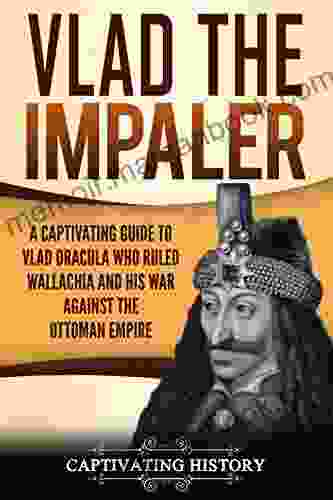
 Houston PowellCaptivating Guide To How Vlad III Dracula Became One Of The Most Crucial...
Houston PowellCaptivating Guide To How Vlad III Dracula Became One Of The Most Crucial...
 Luke BlairSustainable Fashion and Textiles Design: Embarking on a Journey of Conscious...
Luke BlairSustainable Fashion and Textiles Design: Embarking on a Journey of Conscious... Jeffrey CoxFollow ·3.3k
Jeffrey CoxFollow ·3.3k Demetrius CarterFollow ·9.8k
Demetrius CarterFollow ·9.8k Spencer PowellFollow ·10.8k
Spencer PowellFollow ·10.8k Jonathan FranzenFollow ·9k
Jonathan FranzenFollow ·9k Thomas MannFollow ·11.6k
Thomas MannFollow ·11.6k Ricky BellFollow ·2.8k
Ricky BellFollow ·2.8k Greg FosterFollow ·14.3k
Greg FosterFollow ·14.3k Jesus MitchellFollow ·18.6k
Jesus MitchellFollow ·18.6k

 Robert Browning
Robert BrowningGeorge Gershwin's "Love You Porgy" from Porgy and Bess: A...
George Gershwin's "Love You Porgy" is an...

 Gary Reed
Gary ReedFitness Exercise Motivation and Goals: Build Lean Muscle...
Embark on a...

 Terence Nelson
Terence NelsonEat More, Train Less, and Get Lean: The Mr. America...
In today's fast-paced world, achieving a...
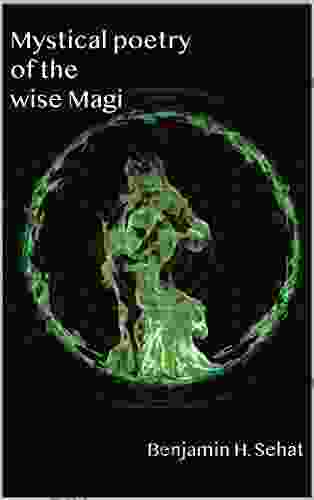
 J.D. Salinger
J.D. SalingerThe Mystical Poetry of the Wise Magi: Interpreting the...
In the realm of...
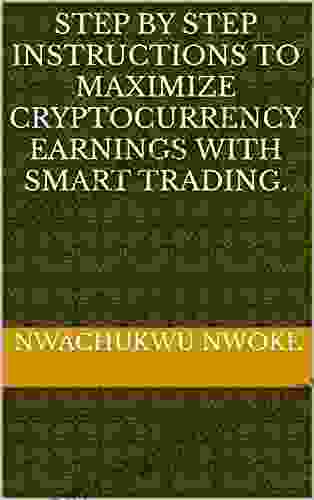
 Blake Bell
Blake BellStep By Step Instructions To Maximize Cryptocurrency...
Cryptocurrency...
4 out of 5
| Language | : | English |
| File size | : | 4757 KB |
| Text-to-Speech | : | Enabled |
| Screen Reader | : | Supported |
| Enhanced typesetting | : | Enabled |
| Word Wise | : | Enabled |
| Print length | : | 92 pages |
| Lending | : | Enabled |


